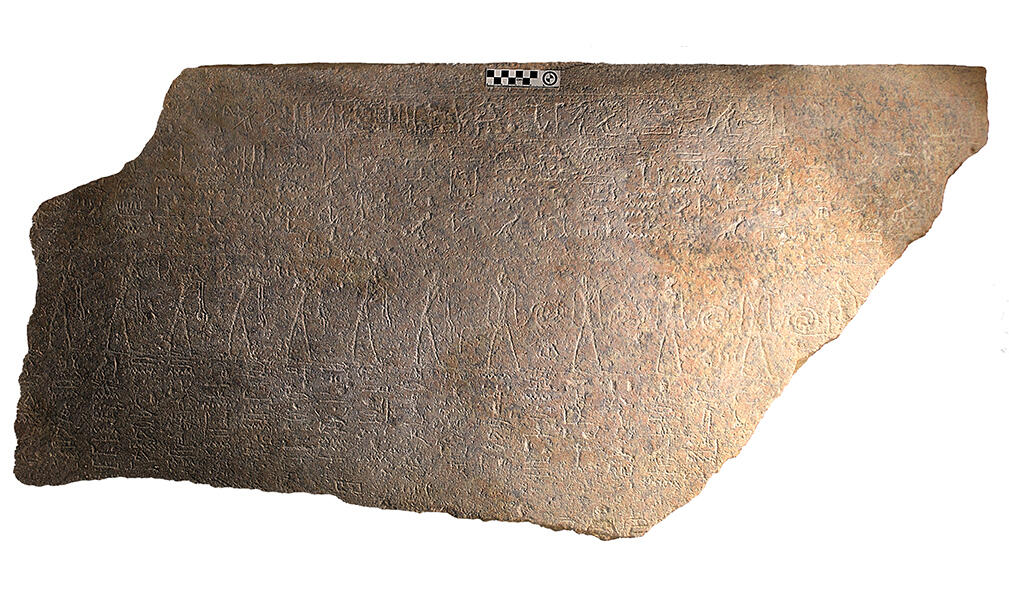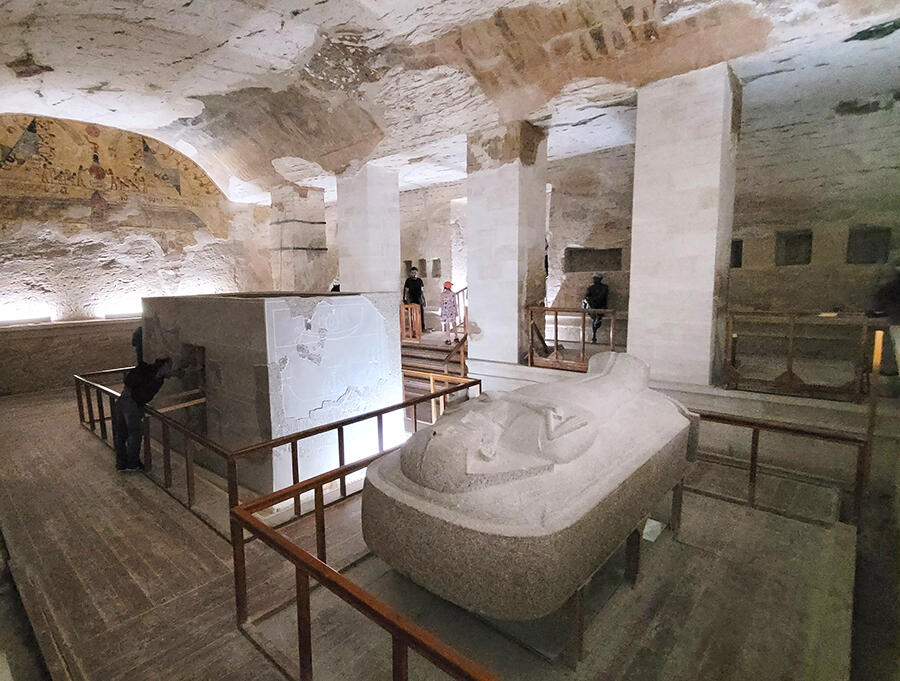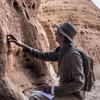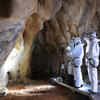You are here
The long-lost sarcophagus of Ramses II has finally been found

An exhibition in Paris last year entitled “Ramses & the Gold of the Pharaohs” offered visitors an opportunity to admire the coffin of Ramses II, and his mummy is on view at the National Museum of Egyptian Civilization in Cairo. However, his sarcophagus has never been displayed to the public – and for a good reason: the few remnants of the alabaster decorative container found in Ramses II’s tomb in the Valley of the Kings near Luxor had been smashed by looters, leaving only tiny shards like pieces of a puzzle. But now a much larger fragment has been identified: an engraved and decorated granite panel 1.7 metres long and 8 centimetres thick. “It's nearly one entire side of the sarcophagus,” explains Frédéric Payraudeau, an Egyptologist at the Orient et Méditerranée laboratory1, who formally identified it. “It’s only missing the curved edges, which plunderers must have broken off, probably in late antiquity, in order to keep just the flat part, to be reused as paving.”
An upcycled sarcophagus
The discovery was made under unusual circumstances. Indeed, the Egyptologist did not find the sarcophagus himself. An Egyptian archaeologist named Ayman Damrani discovered it in 2009 beneath the floor of a Coptic monastery in the Abydos region of central Egypt. In 2017 Damrani and an American colleague, Kevin Cahail, published the findings of their analysis of the panel’s texts and decoration, concluding that it was part of a sarcophagus that had been used several times, including for Menkheperre, a High Priest of the 21st Dynasty. Its original owner, on the other hand, was described as an “unknown prince”.
“When I read these results, I had doubts,” Payraudeau recounts. “I asked my American colleague if I could re-examine the case, and he agreed, given its complexity.” After analysing the hieroglyphics and the different levels of inscription, the researcher confirmed the thesis that the sarcophagus had been reused for Menkheperre. More importantly he identified the “unknown prince”, who was in fact a king – none other than Ramses II. “My colleagues had thought that the cartouche preceded by the word ‘king’ referred to the high priest Menkheperre, who ruled southern Egypt around 1000 BC. However, that cartouche actually dated from the previous engraving and therefore designated the first owner.”
Payraudeau also noticed a decoration that drew his attention: “It depicts the Book of Gates, an initiatory text reserved for kings during the Ramsesside period, which could only indicate a royal sarcophagus.” One last clue put an end to the suspense: “The royal cartouche contains Ramses II’s coronation name, which is specific to him, but was obscured by the condition of the stone as well as a second engraving added for a later use.”

Valley of the Kings, a long-standing target for looters
The reign of Ramses II (1279-1213 BC), pharaoh of the 19th Dynasty, took place in the early second half of the New Kingdom, ancient Egypt’s last period of glory and prosperity. He ruled for nearly 67 years, longer than any of his predecessors, giving him ample time to leave his mark. Dubbed “the builder pharaoh”, he oversaw the construction of temples all over Egypt. “It is very rare not to find the name Ramses II on an ancient site,” Payraudeau notes. “He even added it to older monuments, in order to burnish the memory of his reign, and it worked.”

We now know that Ramses II was buried in a gold coffin (stolen in antiquity), placed in an inner alabaster sarcophagus (the one found smashed to pieces in his tomb) and then in a larger granite sarcophagus, which was pillaged 200 years later by Menkheperre for his own tomb. “This is further proof that the Valley of the Kings was a frequent target for looting, especially during the 21st Dynasty,” Payraudeau explains. “It was a period of economic and social crisis that resulted in an acute lack of materials, when even sovereigns reused the funerary objects of their predecessors.”
The fragment of Ramses II’s sarcophagus is currently being stored in Abydos. “I have informed my American colleagues,” the Egyptologist says. “Now it’s up to them and to the Egyptians to decide how to showcase it, for example in a museum.” ♦
- 1. CNRS / Collège de France / EPHE-PSL / Sorbonne Université / Université Panthéon Sorbonne.

















